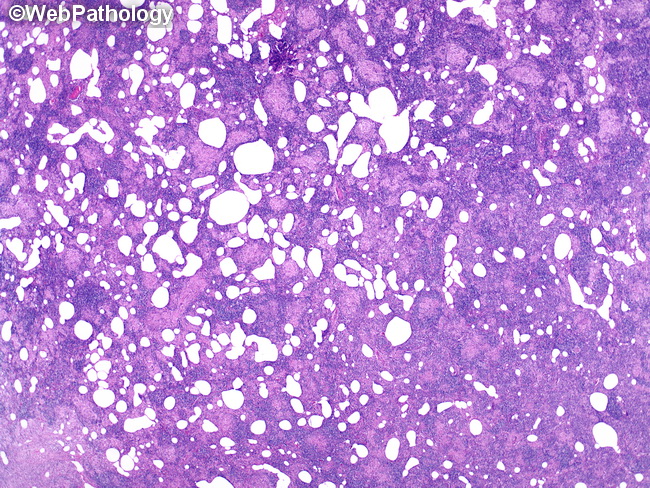Whipple Disease Lymphadenitis : Introduction


Comments:
Introduction: Whipple disease is a chronic, relapsing, multisystem disease caused by infection with Tropheryma whipplei - a gram-positive bacillus related to actinomycetes. It is extremely rare and predominantly affects middle-aged and elderly white males. It is more common in individuals with HLA-B27 (suggesting a role for genetic predisposition) as well as in patients with immune deficiency. The most common symptoms are fever, arthralgia, diarrhea, and weight loss (a more detailed description of clinical features is with the next image). The bacillus is ubiquitous in soil, water, and sewage but is not found in animal hosts (except humans). There is no evidence of human-to-human transmission. The organisms reside primarily within macrophages, intestinal epithelial cells, and endothelium. The bacilli cause no visible cytotoxic effects on the host cells. Likewise, there is no host inflammatory response to the bacilli.



